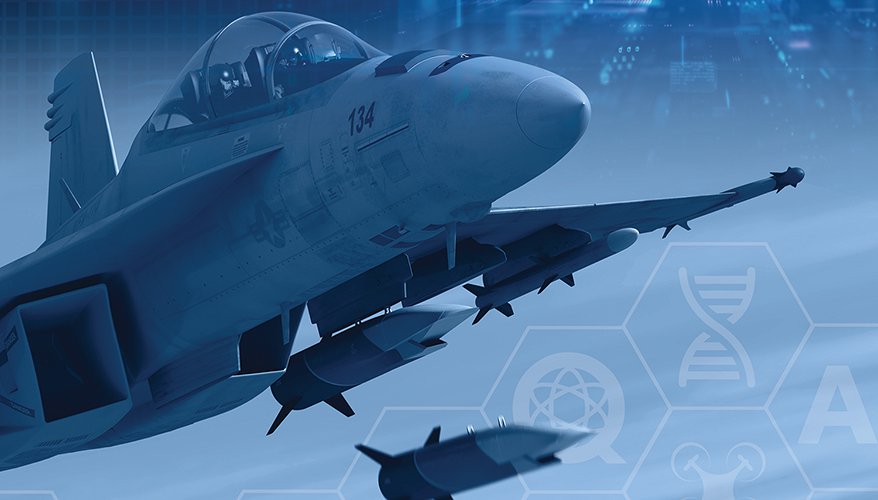La Asociación Nacional de Industrias de la Defensa (NDIA) de EUA ha presentado un detallado reporte que presenta las principales vulnerabilidades que tiene la cadena de suministros de las Tecnologías de Hipersónicos en ese país. El informe incluye la infraestructura de producción, el abastecimiento de materiales críticos, las instalaciones específicas para ensayos y la “fuerza laboral”. Finalmente, realiza recomendaciones acerca de las acciones necesarias para el desarrollo, implementación. resiliencia y sostenibilidad de esa capacidad vital para la defensa nacional.
As the severity of U.S. supply chain vulnerabilities has become more apparent in recent years, the National Defense Industrial Association’s Emerging Technologies Institute launched an ambitious study to assess the state of defense emerging technology supply chains and provide policy recommendations for their development, health and resilience.
The first report, “Hypersonics Supply Chains: Securing the Path to the Future,” was released May 11.
The report concludes that current hypersonics supply chains, including the manufacturing base, critical material supplies, testing infrastructure and the workforce are incapable of supporting hypersonic weapons deployed at-scale.
Why? Participants in ETI-led working groups said that the Defense Department’s inconsistent demand signals are, at least partially, responsible. Its lack of consistent focus on this technology has led to a small hypersonics manufacturing base with limited suppliers, suited only for manufacturing small numbers of hypersonic systems with long lead times.
Testing is another key supply chain concern. Existing hypersonics testing infrastructure is insufficient due to age and lack of efficient data gathering. At the same time, hypersonic systems compete for limited test resources with current high-priority programs, such as missile defense and nuclear deterrence.
With these limitations, solutions are needed in the short and long term. Additional testing infrastructure should be jointly funded by the Defense Department and industry at appropriate academic institutions to help replace aging systems and facilities. Despite positive steps at some universities, much more needs to be done. University testing can — with appropriate security protocols in place — also help address workforce challenges evaluated in the report.
The nation should also look to partners and allies to address testing infrastructure shortfalls. The United States already has a blooming partnership with Australia in this regard that should be expanded. The department should also conduct a feasibility study of an overland flight corridor in northern Canada.
Another integral part of the hypersonics supply chain is the workforce. According to several working group participants, existing hypersonic talent is unbalanced and misaligned to current needs, in part due to the volatile history of the technology’s development. There is a plethora of early and mid-career aerothermal expertise, but a dearth of expertise in hypersonic controls, system design and high-temperature materials.
Workforce issues could be addressed by academia via the University Consortium for Applied Hypersonics. Some work has been done in this area, where the consortium leverages academia to train mid-level talent in hypersonics-adjacent fields. However, these efforts need to be expanded.
The study also explored critical raw materials and goods, the most traditional part of the supply chain. We found that hypersonics manufacturers lack access to enough high-temperature material suppliers. For example, carbon-carbon is the only option for coatings for higher speed hypersonics systems. Because these composites have niche applications and defense demand is low, the supply base is relatively small. Most coatings are made by hand. Currently, there are only three suppliers for the carbon-carbon composites used in hypersonic vehicle coatings.
At the same time, the United States is reliant on China for rare earth elements, which have numerous applications in hypersonics systems, including high-temperature refractories for continuous-casting nozzles.
One positive development in hypersonics supply chains is the availability of ammonium perchlorate, which was boosted by Northrop Grumman’s recent entry into the production market.
Previously, there was only one Defense Department-approved domestic supplier. While only time will tell if having two suppliers is sufficient, a second entrant into the market has the potential to reduce risks associated with one supplier and could reduce costs due to competition.
The report provides several policy recommendations to address critical material supply chain vulnerabilities. First, Congress and the Defense Department should work to reinforce the National Defense Stockpile of strategic minerals.
The government should also set the regulatory environment to permit and incentivize safe domestic rare earth mining and processing to reduce reliance on China.
And the United States should look to close partners and allies, including Australia and Canada, to diversify supplies of critical raw materials.
Finally, hypersonics supply chains face many of the same cybersecurity vulnerabilities, counterintelligence risks and intellectual property theft as other supply chains. Working group participants discussed the cybersecurity challenges faced by smaller, lower-tier suppliers who often lack the necessary resources for robust cybersecurity measures.
At the same time, recent reports indicate that China recruited several former scientists from Los Alamos National Lab to work on its hypersonics programs. These — and other supply chain vulnerabilities — must be addressed through concerted efforts by government and industry.
The Defense Department could address major cybersecurity risks at the low-to-mid-tier levels of the hypersonics supply chain by creating a “bug bounty” program for small government contractors. At the same time, the FBI should work with industry and academic leadership to increase awareness of counterintelligence threats.
While hypersonics supply chains face substantial challenges, there are many steps that can be taken to reduce risk and protect vital assets against a host of vulnerabilities. However, action must be taken today. Each of these changes will take time but is crucial to securing hypersonics supply chains.
Rebecca Wostenberg is a research fellow at NDIA’s Emerging Technologies Institute.


